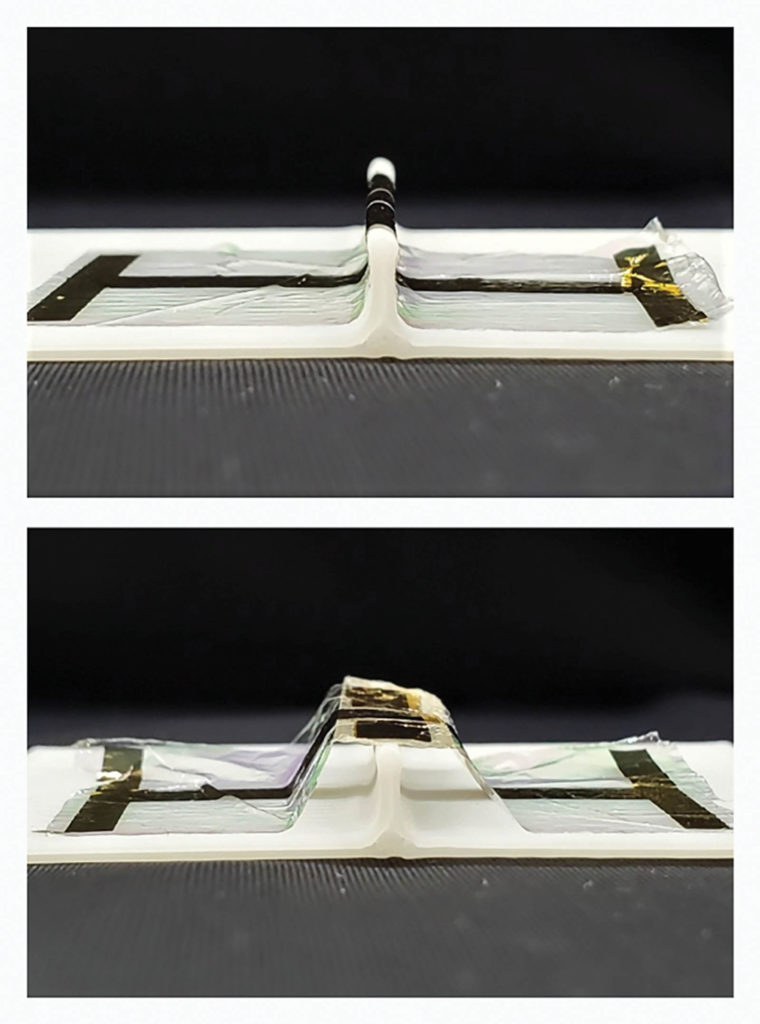
Researchers at the RIKEN Center for Emergent Matter Science (CEMS) and the RIKEN Cluster for Pioneering Research (CPR) in Japan have developed a technique to improve the flexibility of ultra-thin electronics, such as those used in bendable devices or clothing.
According to a RIKEN press release, as electronic devices get progressively smaller, and the desire to have bendable, wearable and on-skin electronics increases, conventional methods of constructing them have become impractical. One problem is how to connect and integrate multiple devices or pieces of a device that each reside on separate ultra-thin polymer films. Some conventional methods can be damaging to super-thin electronics, and others require perfectly smooth and clean surfaces.
The method developed at RIKEN CEMS/CPR does not use adhesives, high temperature or high pressure, and it doesn’t require smooth or clean surfaces. The new technique, called water vapor plasma-assisted bonding, creates stable bonds between gold electrodes that are printed into ultra-thin—2 thousandths of a millimeter—polymer sheets using a thermal evaporator.
“We expect this new method to become a flexible wiring and mounting technology for next-generation wearable electronics that can be attached to clothes and skin,” says Fukuda. “The next step is to develop this technology for use with cheaper metals, such as copper or aluminum.”
The study was published in Science Advances in 2021.
 TEXTILES.ORG
TEXTILES.ORG


